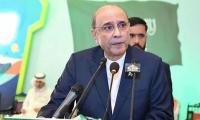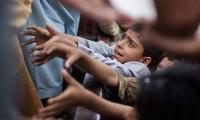The weathercock is the only leader they follow. They are the lone wolves of Pakistan’s politics who hunt for their own sake and join the pack that suits them. When game becomes scarcer, they can switch loyalties to a rival pack overnight. This rootlessness, mobility and the ability to serve diverse patrons has earned them the unenviable title of lotas, the most lowly of all vessels and utensils in a Muslim household. Who are these electables and can they decisively shape the outcome of 2018 election?
Let’s try our hand at some classification. We can put electables into two categories: the first generation electables and the dynastic electables. When wealth and prestige was rooted in land, almost all electables used to be dynastic, belonging to the traditional elite. This has changed substantially; a good part of the electables, particularly the first generation electables, are now mid-to-large-scale businessmen, while some are even middle-class professionals. Here ‘middle class’ refers to the starting point, before they accumulate a fortune and join the club.
Though electables lack a lasting association with political parties, their strength is based in the strong bond with their voters. This bond can be based on personal reputation, wealth, kinship, spirituality, or patronage. Normally, it is a mix of various factors. Their electioneering skills make them valuable for the political parties who welcome them into their fold and allot them tickets despite their serial infidelity, and at the cost of the loyal cadres of the parties.
Given a choice, all electables would like to run as independents and join the winning party. Unfortunately, political parties have gained strength and only a fraction of electables can win a constituency as independents. In 2008, 12 independent candidates were elected as members of the National Assembly; in 2013, when the vote bank of the PPP had suddenly shrunk, 27 independent candidates reached the lower house.
Electables like to align themselves with a party that is popular with the electorate, and jump ship when a party faces the risk of losing an election. They may also join a party that emerges as the king’s party, enjoying support from where it matters. This was the case with the PML-Q in 2002 and, to some extent at least, is the case with the PTI in 2018. Some electables may even be nudged for the purpose. NAB has proved an effective tool for behaviour change communication in this regard.
The politics of electables is based on patronage. In exchange for votes, electables strive to provide services that people need and the state is unwilling or unable to provide. The most important is access to the state. They serve as mediators between the people and the state. Arguably, this has always been the most profitable and powerful job in South Asia. The second and equally important service is protection from predatory state functionaries. Not unrelated to these two is conflict resolution without bringing the expensive and exploitative system of justice into the equation.
A failed justice system is indeed the major reason for the existence of the electables. Our judicial and policing systems work as a powerful mechanism of social control that perpetuate the socio-political hierarchies. As effective patrons, electables work as protection insurance from the injustices of the thaana and the kutchehry (the police station and the court) if and when the need arises. In very simple words, we have electables because of a dysfunctional system of justice and inefficient state institutions.
Zia turned all politics into a tournament between electables by first holding non-party local body elections and then non-party elections for parliament. This produced a whole new crop of electables and ushered in the golden era of electables that continued till 2008.
The defections by electables kept the political system unstable during the 1990s when attempts were made to topple both the national and the provincial governments. In 1993, the then Punjab CM Ghulam Haidar Wyne’s government was overthrown by Manzoor Wattoo’s defection. In 1994, the then KP CM Sabir Shah’s government was removed by opposition leader Aftab Sherpao’s efforts to win over defectors from other parties.
In 1997, the electables faced a setback when the Nawaz Sharif government incorporated provisions against defection into the constitution by inserting Article 63-A through the 14th amendment to the constitution. The anti-defection clause made it almost impossible for electables to change their loyalties midway or vote act against the policies of their political parties.
The Musharraf government was able to herd a large number of electables from the PML-N to the PML-Q. The general election of 2002 under Pervez Musharraf resulted in the PML-Q winning 118 seats in the National Assembly, falling short of attaining a majority, while the PPP won 81 seats. Only with the support of turncoats from the PPP did the PML-Q succeeded in securing a majority to enable the then PM Zafarullah Khan Jamali win a vote of confidence on November 15, 2002. Jamali won the vote with the help of 18 defectors from the PPP, two legislators from the MMA and two from the PML-N.
During 1987-2000, the PML (later PML-N) emerged as the largest political patronage machine in Pakistan. It was also the main refuge of electables who had emerged during the Zia era. Musharraf’s coup drained the electable swamp for the PML-N, turning it into a genuine political party. In 2002, the PML-Q took over the role of the platform for electables; that also proved its undoing in 2008.
Starting 2008, the PML-N tried to rein in the electables and enhance the influence of the party. The party tried to punish turncoat electables by making them wait for long years before taking them back, relegating them to the back benches after accepting them, or not accepting them at all. The wrath of Sheikh Rasheed, who has been out of power for a decade now, shows the risks of this strategy. However, the party has gained by putting loyalists at the top of the power pyramid.
Both the PML-N in Punjab and the PTI in Khyber Pakhtunkhwa also tried their hands at state-building by limiting political influence on state functionaries. Though it was done improve service delivery, it had a negative influence on the influence of electables who found the doors of bureaucrats slammed shut upon them. Both PML-N and PTI have been able to enhance a direct appeal to the electorate through this mechanism.
The PTI is exposing itself to serious risks as a party by opening its gate upon large herds of migrating political bison. It can be argued that the party did not have much of an option. Its support base remains limited and it did not have enough winnable candidates in Punjab because the PTI did not exist as a proper political entity before 2013 elections. As Imran Khan has explained, the PTI did not have enough electables in its fold because they were not willing to join the party.
The PTI is facing a challenge from the electables who have been denied a ticket for the coming elections. The ticket, in most cases, was the major motive for these electables to join the PTI. However, the PTI’s biggest challenge remains public opinion. Despite five years of unrelenting campaigns and rallies, it has not been able to substantially dent the popularity of the PML-N. Can the electables do the trick? That’s a question voters will have to answer.
The writer is an anthropologist and development professional.
Email: zaighamkhan@yahoo.com
Twitter: @zaighamkhan
This demand has fueled rapid growth deposit base of Islamic Banks and Islamic Windows operated by conventional banks
But Punjab Agriculture Food and Drug Authority building near Thokar Niazbeg on Multan Road stands out
Macron has been particularly vocal in their criticism, asserting that withholding arms from Kyiv plays directly into...
As PPP governs province, Bilawal Bhutto Zardari holds strategic position to address both violence and its underlying...
Critics argue that strategy is vague, but closer look indicates strategic alignment with global trends and national...
To defeat it, we must distrust bot-driven narratives, to defeat it, we must verify sources before believing or sharing







